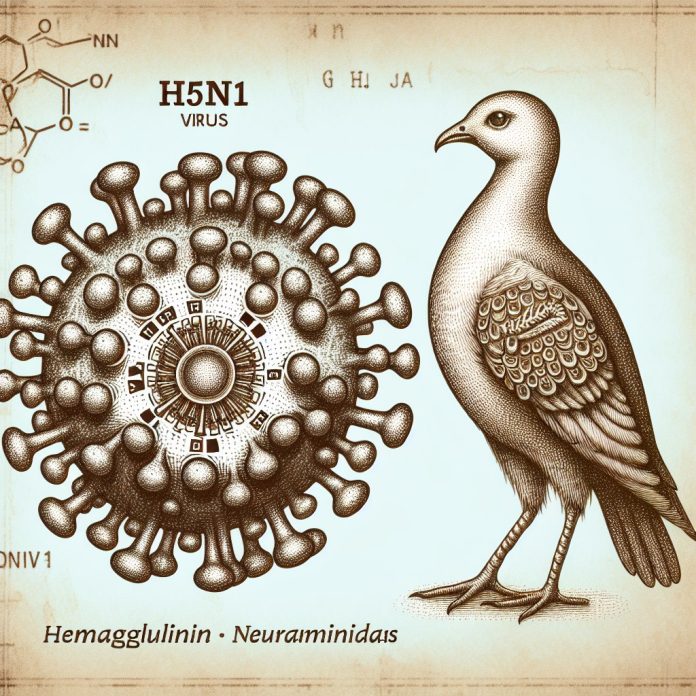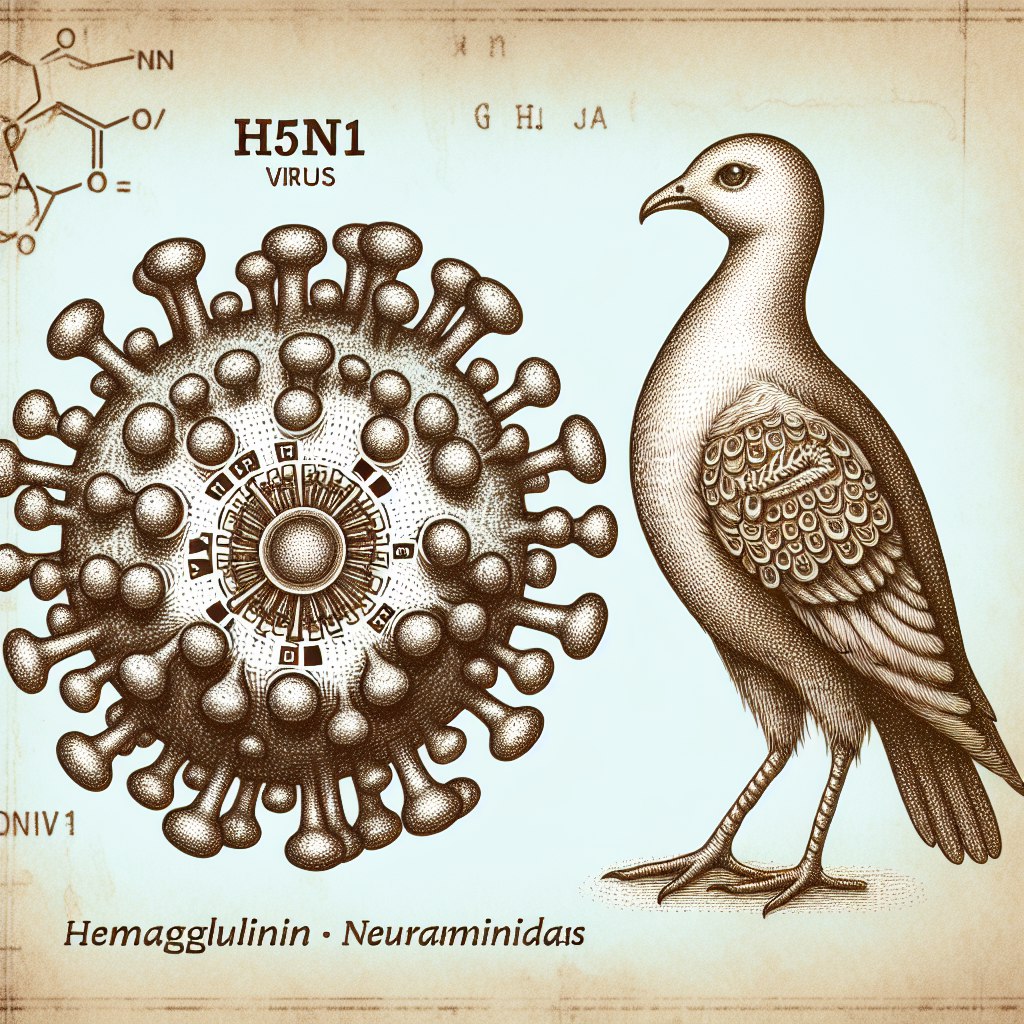
What is H5N1 and how does it relate to avian influenza? This question brings us to the forefront of understanding a significant threat to global health. H5N1 is a subtype of the Influenza A virus, commonly referred to as the avian influenza virus, that has caused concern among health professionals and the public alike due to its potential to cause severe disease in birds and humans. Understanding H5N1 and its relationship with avian influenza is crucial for mitigating its impact and preventing potential pandemics.
Understanding Avian Influenza
Avian influenza, commonly known as bird flu, is an infectious viral disease that affects birds. It is caused by influenza A viruses, which can be categorized into several subtypes based on two proteins on the virus surface: hemagglutinin (H) and neuraminidase (N). Avian influenza viruses are found naturally in wild birds worldwide and can infect domestic poultry and other bird species.
Transmission of avian influenza typically occurs through direct contact with infected birds, their droppings, or contaminated environments. Wild birds, particularly waterfowl, are natural reservoirs of the virus and can spread it over long distances. Domestic poultry, such as chickens and turkeys, are particularly susceptible to avian influenza, which can lead to severe outbreaks and significant economic losses in the poultry industry.
What is H5N1?
H5N1 is one of the highly pathogenic avian influenza (HPAI) subtypes, meaning it causes severe disease in birds and has a high mortality rate. The H5N1 virus first emerged in 1996 in geese in China and has since caused numerous outbreaks in poultry and wild birds across Asia, Europe, and Africa.
The impact of H5N1 on birds can be devastating. Infected birds may exhibit symptoms such as swelling, respiratory distress, and sudden death. The virus spreads rapidly among flocks, leading to high mortality rates and necessitating culling of infected and exposed birds to control the outbreak.
H5N1 and Human Health
While avian influenza primarily affects birds, some subtypes, including H5N1, have the ability to infect humans. Human infections with H5N1 are rare but can occur through direct or close contact with infected birds or contaminated environments. The first human cases of H5N1 were reported in 1997 in Hong Kong during a poultry outbreak.
Symptoms of H5N1 in humans are similar to those of seasonal influenza but can be more severe. They include fever, cough, sore throat, and muscle aches, progressing to severe respiratory illness, pneumonia, and multi-organ failure in some cases. The mortality rate for H5N1 in humans is high, with more than 50% of reported cases resulting in death.
The pandemic potential of H5N1 has been a significant concern for global health authorities. Although human-to-human transmission of H5N1 is currently limited and inefficient, there is a fear that the virus could mutate or reassort with human influenza viruses, gaining the ability to spread easily between people and potentially causing a pandemic.
Preventing and Controlling H5N1
Preventing and controlling H5N1 involves several strategies aimed at reducing the risk of transmission in birds and humans. These strategies include:
Surveillance and Monitoring: Monitoring bird populations for signs of avian influenza and conducting regular testing to detect the presence of H5N1 early.
Biosecurity Measures: Implementing strict biosecurity practices in poultry farms to prevent the introduction and spread of the virus. This includes controlling the movement of birds, maintaining hygiene, and disinfecting equipment and facilities.
Vaccination: Vaccinating poultry against H5N1 can help reduce the spread of the virus and protect bird populations. However, vaccination must be used in conjunction with other control measures.
Culling Infected Flocks: Rapid culling of infected and exposed birds is a crucial step in controlling outbreaks and preventing the spread of the virus to other flocks and species.
Public Health Measures: Educating the public, particularly those in close contact with birds, about the risks of H5N1 and promoting practices to reduce exposure, such as avoiding contact with sick birds and maintaining good hygiene.
Research and Development
Research and development efforts are ongoing to better understand H5N1, develop effective vaccines, and improve treatment options for infected individuals. Scientists are also studying the virus’s genetic makeup and its potential to mutate, aiming to predict and prevent possible pandemic scenarios.
Vaccines for H5N1 are in various stages of development. Some vaccines have been developed for poultry, while human vaccines are still under research and testing. The challenge lies in creating a vaccine that is effective against multiple strains of H5N1 and can provide long-lasting immunity.
Antiviral drugs like oseltamivir (Tamiflu) and zanamivir (Relenza) have shown effectiveness against H5N1 in humans, particularly when administered early in the course of the illness. However, the virus’s potential to develop resistance to these drugs remains a concern.

The Global Response to H5N1
The global response to H5N1 involves coordination among international organizations, governments, and health agencies. The World Health Organization (WHO), the Food and Agriculture Organization (FAO), and the World Organisation for Animal Health (OIE) play key roles in monitoring outbreaks, providing guidance, and supporting countries in their efforts to control and prevent the spread of H5N1.
Preparedness plans are essential in managing potential outbreaks. Countries have developed national strategies for surveillance, reporting, and responding to avian influenza, including H5N1. These plans include stockpiling antiviral medications, conducting public awareness campaigns, and establishing protocols for rapid response to outbreaks.
The Future of H5N1 and Avian Influenza
The future of H5N1 and avian influenza remains uncertain, with the virus continuing to pose a threat to both animal and human health. Vigilance, research, and international cooperation are critical in mitigating this threat and preventing future outbreaks.
Innovations in vaccine development, antiviral treatments, and surveillance technologies offer hope for better control and prevention of H5N1. Continued investment in these areas, along with a commitment to biosecurity and public health measures, will be essential in managing the risks associated with avian influenza.
Conclusion
In conclusion, What is H5N1 and how does it relate to avian influenza? H5N1 is a highly pathogenic avian influenza virus subtype that poses significant risks to both bird and human health. Understanding the virus, its transmission, and its impact is crucial for developing effective prevention and control strategies. Through ongoing research, international collaboration, and vigilant public health efforts, we can mitigate the threat of H5N1 and protect global health. The legacy of H5N1 underscores the importance of preparedness and resilience in the face of emerging infectious diseases.



















